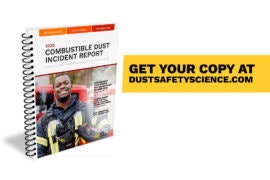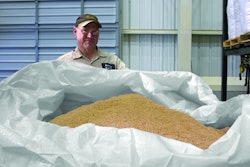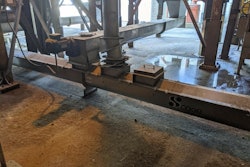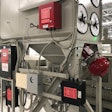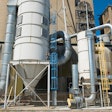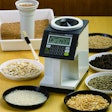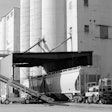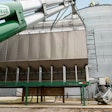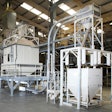
For the fifth year in a row, the team at Dust Safety Science has compiled and analyzed combustible dust incidents from around the world.
As of December 31, 2020, they captured almost 1000 incidents in theirincident reportsalong with a detailed analysis of the materials, industries and equipment involved.
Dust Safety Science aggregates their reports twice a year, and this most recent report includes all incidents they’ve captured from January 1, 2020, to December 31, 2020. These are broken into fires and explosions occurring both in North America and internationally throughout the world.

The following table compares the number of incidents, injuries and fatalities entered into the database since we started recording.

Loss History – United States
Loss history from dust explosions in the United States over the last five years is given in the following table. This data has been collected in the incident database and reported in the combustible dust incident reports, 2016 to 2020.
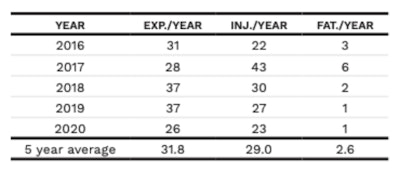
2020 Global Loss Overview
In 2020, 70% of the fatalities recorded occurred due to dust explosions. Of the injuries, 73% occurred due to explosions and 27% occurred due to fires.
Some of the more severe incidents include:
Five injured in food recycling dust explosion(Rose Hill, NC)
One killed, three injured in dryer explosion(Belle, WV)
One killed, four injured in feed plant explosion(Shanxi, China)
One killed, four injured in dried sludge explosion(Bristol, UK)
Limited information has been available for damages from dust explosions and fires. From the information that is available the following incidents resulted in more than $1,000,000 in losses:
Wood chipping fire causes $2M in damages(Ramseur, NC)
Paper products fire causes $2M in damages(Mooresville, NC)
Sawmill destroyed by fire(Cap-Pelé, New Brunswick)
Food plant fire causes $3M in damages(Sibley, IA)
Materials Involved
In reviewing the global incident data, food and wood products made up over 75% of the combustible dust fires and explosions recorded.
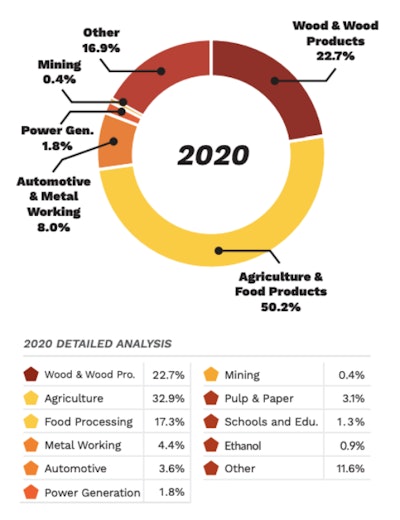
These materials also resulted in 57% of the injuries and 40% of the fatalities. A breakdown of the fires, explosions, injuries and fatalities for each type of material is given as follows:
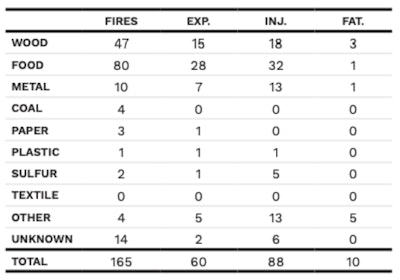
的死亡金属粉末和两个受伤involved aluminum alkyl, while three of the injuries involved titanium. The other injuries from metal dusts involved four incidents where the type of metal was not specified.
Two fatalities occurred in an explosion where unspecified raw materials were being added to a reactor, one fatality occurred when smashing unspecified chemicals in a tank, four fatalities occurred during a dried sludge explosion and one occured in a bleach powder drier explosion.
Industries Involved
如历史数据所示,木材加工,wood products, agricultural activity and food production make up a large portion of the overall fire and explosion incidents. Since 2017, wood and wood products have ranged from 21% to 28% of the incidents, while agricultural activity and food production has ranged from 33% to 44%.
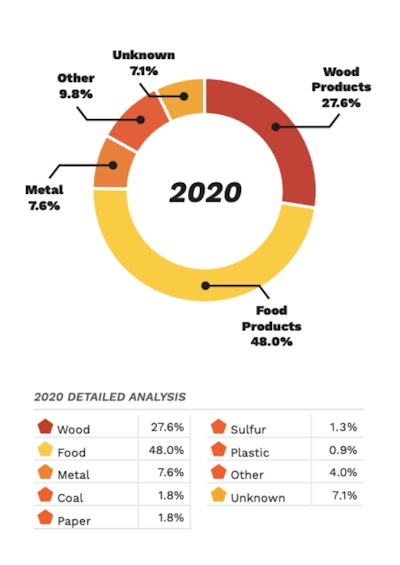
As shown in the detailed incident breakdown, the “other” category includes pulp & paper, high schools, and educational facilities. Industries not broken out in the detailed breakdown include incidents in metal recycling, rail maintenance, display stand manufacturing, jewelry, surfactant manufacturing, plastic bottle manufacturing, chemical processing, phosphate production, waste treatment, composites manufacturing, and textiles.
Combined, the overall “other” category of industries makes up 28% of the injuries and 50% of the fatalities reported in 2020. Wood and wood products, agriculture and food processing, and automotive and metalworking make up 19%, 43% and 8% of the injuries, respectively. Wood and wood products, and agriculture and food processing make up 30% and 20% of the fatalities, respectively.
Equipment & Causes
In 2020, storage silos demonstrated the highest percentage of combustible dust incidents with 30 fires and 13 explosions reported. This is a higher percentage than the 2017 and 2018 reports which found that dust collection systems had the highest percentage of incidents. In 2020, only 13% of the fires and explosions occurred in dust collection systems.
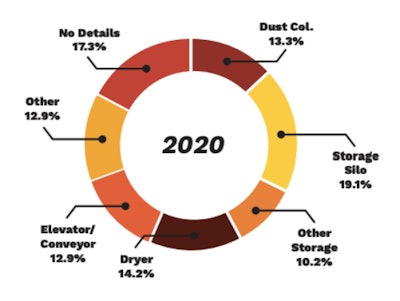
As demonstrated in previous reports storage silos had the largest number of injuries. This is followed by other storage (e.g., small bins, hoppers and storage buildings), dust collection systems, dryers and elevators. The breakdown between fires, explosions, injuries and fatalities for different pieces of equipment are summarized in the following table for 2020:
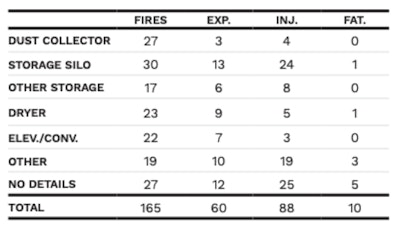
Although equipment labeled under “Other” only had 13% of the total incidents, these incidents resulted in 22% of the injuries and 30% of the fatalities. Some of these included a spark that ignited varnish vapors and sawdust while doing maintenance on a staining machine, an explosion and fire in the ducting and mill of a pellet manufacturing process, an explosion of a combination of titanium and calcium powder in a chemical processing unit, a dust fire and a dust explosion occurring while using a welding machine in a dusty area, an explosion in a raw material feed tank into a reactor, and an explosion in a plastic extruder system.
For more information or to download a copy of the report, visitdustsafetyscience.com/2020-report.
